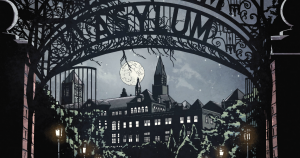
Why Pelvic Pain Is Absent from YA Fiction
An estimated 1 in 7 women suffer from chronic pelvic pain; it’s bizarre and disappointing that despite these statistics, there are distinctly zero characters with this condition.

An estimated 1 in 7 women suffer from chronic pelvic pain; it’s bizarre and disappointing that despite these statistics, there are distinctly zero characters with this condition.
What was originally intended to be a one-month event has now reached its third birthday, and we could not be more ecstatic!

Portrayals of scoliosis in fiction often lack realism. Why is there so little reflection on the factors that affect a person’s journey?
It wasn’t until I was an adult that I could finally understand that from the time of my diagnosis, my education was not going to be “complete,” because I did not have the full access I needed. It was as if intensive speech therapy and itinerant teachers were more important than having a sign language interpreter in my classes.

When we see institutions in YA, we usually see them in one of two contexts: a “sane” person wrongly incarcerated in one, or a spooky (often old, sometimes abandoned but haunted by ghosts) asylum filled with “crazy people.”
I can feel their eyes on me. They’re all staring, judging.

Predictably, many of the tropes relating to D/deaf and hard of hearing characters deal with communication methods and degree of hearing loss. Most, if not all, of these tropes have to do with people’s assumptions and wishful thinking about hearing loss.